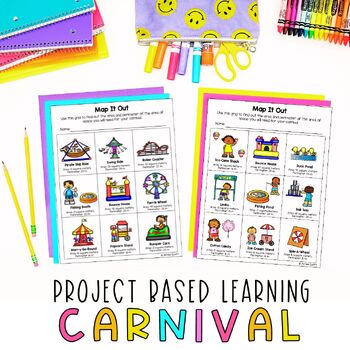PBL Math Project for EDITABLE | Design a Carnival | Real World Math Application
- Zip
What educators are saying
Description
Transform your math curriculum with this fun and engaging project based learning activity! This product is perfect for third grade, but can easily be adapted for other grade levels. Students will plan and design their own carnival with a budget that they need to stick to, practicing addition and subtraction in a creative way! With no-prep templates, an editable google slides version, and black and white printer-friendly copies available, you can easily personalize the activity to fit your student needs and grade level standards. Help your students reach their math goals while they have fun with this project-based learning activity!
To Use on Google Slides:
Simply drag and drop the PowerPoint file into your Google Drive to upload!
Want the non-editable resource? Find it here!





